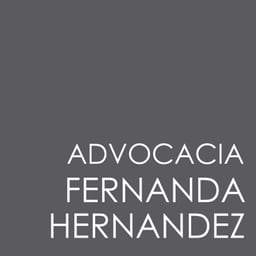
Brazil


Advocacia Del Chiaro

Advocacia Fernanda Hernandez
Amaral e Nicolau Advogados
Amatuzzi Advogados

Araújo e Policastro Advogados

Ayres Westin Advogados

Azevedo Sette Advogados

B/Luz
Barreto Advogados & Consultores Associados

Basch & Rameh

Basch & Rameh Advogados Associados

Bermudes Advogados

Bhering Advogados

Bocater, Camargo, Costa e Silva, Rodrigues Advogados

Brandao Ozores Advogados
Bumachar Advogados Associados

Campos Mello Advogados

Cescon Barrieu

CFGS Advogados

CGM Advogados

Cleary Gottlieb Steen & Hamilton

Clifford Chance

Coelho Murgel Atherino Advogados

Corrêa Ferreira Advogados

COSRO

Costa, Albino & Rocha Sociedade de Advogados (CAR)

Dannemann Siemsen Advogados

De Luca, Derenusson, Schuttoff Sociedade de Advogados

Del Chiaro Pereira Advogados

Demarest Advogados
Diamantino Advogados Associados S/C

Dias De Souza Advogados Associados

DLA Piper Brazil
Duarte Garcia, Serra Netto e Terra Advogados

E. Munhoz Advogados

Ecija

Elias, Matias Advogados

Ernesto Borges Advogados

Escritório Jurídico Carbone

FAS Advogados, in cooperation with CMS

Felsberg Advogados

Ferro, Castro Neves, Daltro & Gomide Advogados

Finocchio & Ustra Sociedade de Advogados

Franco Leutewiler Henriques Advogados (FLH Advogados)
Freire, Gerbasi e Bittencourt Advogados

Galdino, Pimenta, Takemi, Ayoub, Salgueiro, Rezende de Almeida
Garcia de Lima Sociedade de Advogados

Garé Advogados

Gerson Branco Advogados

Giamundo Advogados

Grinberg Cordovil Advogados (GCA)

GVBG - Gentil Monteiro, Vicentini, Beringhs e Gil Advogados

Hogan Lovells

Iokoi, Paiva, Jonasson e Scalzaretto Advogados

Jones Day

Julião Coelho Advocacia

Justen, Pereira, Oliveira & Talamini Advogados

Kincaid | Mendes Vianna Advogados

KLA Advogados

Lefosse Advogados

Licks Attorneys

Limongi Advocacia

Machado Associados

Machado Meyer Sendacz e Opice Advogados

Madrona Advogados

Magalhães e Dias - Advocacia

Manesco Advogados

Manesco, Ramires, Perez, Azevedo Marques Sociedade de Advogados

Mange Advogados

Mannrich e Vasconcelos Advogados

Mattos Filho

Medina Osorio Advogados
Mello Torres

Milbank

Monteiro e Monteiro Advogados Associados

Moreira Menezes Martins Advogados

Norton Rose Fulbright

Oliveira e Olivi Advogados Associados

Peixoto e Cury Advogados
Perdiz de Jesus Advogados Associados

Pinheiro Guimarães

Pinheiro Neto Advogados

Proskauer Rose LLP
Queiroz Cavalcanti Advocacia

Rafael Pandolfo Advogados Associados

Rayes e Fagundes

Ricardo Siqueira Sociedade de Advogados
Rossi, Maffini, Milman Advogados

SA Law

Salomão Advogados

Saud Advogados

Schmidt, Lourenço & Kingston Advogados

Silveira Ribeiro Advogados

Silveiro Advogados

Simpson Thacher & Bartlett LLP
Siqueira Castro – Advogados

Souto Correa Advogados

Stocche Forbes Advogados

Szazi, Bechara, Storto, Reicher e Figueirêdo Lopes Advogados

Tauil & Chequer Advogados
Tavares & Chacur de Miranda Advogados

Thomaz Bastos, Waisberg and Kurzweil Advogados
Toron Advogados

Tortoro, Madureira & Ragazzi Advogados

TozziniFreire

Trench Rossi Watanabe

Veirano Advogados

Vella Pugliese Buosi and Guidoni Advogados

Vella Pugliese Buosi e Guidoni Advogados

Vella, Pugliese, Buosi e Guidoni Advogados
Wald, Antunes, Vita e Blattner Advogados

White & Case LLP

Winston & Strawn

Wongtschowski Kleiman Advogados
News & Developments
ViewPress Releases
Gran Capital Partners Announces Strategic Investment in Aurok (STK Comércio de Alimentos S.A.)
The corporate and mergers and acquisitions team at Finocchio & Ustra Advogados advised Gran Capital Partners — a Brazilian private equity firm that partners with entrepreneurs by combining capital and management support to scale high-potential businesses — on a strategic investment transaction in STK Comércio de Alimentos S.A. (Aurok), a chain of high-quality meat boutiques with stores in Campinas and Indaiatuba and a vertically integrated operation with its own high-technology processing facility. This is the firm’s third recent investment, following Sterna Café and La Guapa.
The transaction reinforces the ongoing professionalization of the specialized protein retail and gourmet grocery segments, with positive impacts on quality standardization, the shopping experience, and the expansion of the product portfolio for consumers.
As a result, Aurok will be able to accelerate its growth and implement its expansion, with gains in operational efficiency and enhanced professionalization, thereby contributing to the consolidation of the segment in São Paulo.
The transaction was led by partner Andrea Tincani, with the participation of Camila de Godoy Ferreira, Júlia Cristina Arruda Savioli, Carolina Zogaeb, and Enrico Abrahão Oliveira, all from Finocchio & Ustra Advogados.
Finocchio & Ustra Sociedade de Advogados - November 28 2025
White-collar crime
Brazil Strengthens Financial Crime Enforcement with New Federal Tax Unit
Brazil creates special tax unit to combat money laundering, targeting fuel distributors and fintechs.
Brazil has announced the creation of a specialized unit within the Federal Revenue Service (Receita Federal) to intensify efforts against financial crime[1]. The move followed the “Spare” and “Carbono Oculto” operations, which uncovered billions of reais in illicit transactions. These operations revealed how sectors such as fuel distribution and fintechs were used as platforms to channel or disguise suspicious financial flows, highlighting the growing complexity of organized crime schemes.
A New Investigative Role for Receita Federal
Traditionally, the Receita Federal acted primarily as a tax authority, identifying irregularities in payments and auditing fiscal integrity. With the establishment of this new unit, the agency steps into a broader role, working side by side with police and prosecutors in detecting, analyzing, and disrupting money laundering operations. This represents a structural change in Brazil’s enforcement landscape, aligning with international trends that emphasize “following the money” to combat organized crime.
Anti-Money Laundering Challenges and Sector Exposure
The findings of the recent operations make clear that certain industries are more vulnerable to infiltration by illicit networks. Fuel distribution, with its high-volume and cash-intensive operations, and fintechs, with their agility and technological models, are particularly exposed. For businesses in these sectors, the announcement should be read as a signal of intensified monitoring and heightened expectations regarding anti-money laundering controls and transaction monitoring systems.
The new framework also signals broader international implications. Many of the sectors under scrutiny operate through import and export chains or rely on cross-border financial systems. As Brazil intensifies cooperation with foreign tax and enforcement authorities, companies abroad connected to Brazilian operations may face greater scrutiny and information sharing between jurisdictions.
Concerns Over Fiscal Confidentiality
At the same time, the new role of Receita Federal raises important concerns. Companies and their shareholders rely on the constitutional guarantee of fiscal secrecy, which protects sensitive financial data from undue exposure. The growing involvement of the tax authority in criminal investigations creates the risk that legitimate business information could be subject to excessive scrutiny or even misused.
It is essential to emphasize that combating money laundering cannot justify unrestricted access to confidential data. The effectiveness of enforcement must not come at the cost of transforming financial intelligence into a fishing expedition that compromises corporate privacy and undermines due process.
Looking Ahead
The creation of this unit is a turning point in Brazil’s strategy against financial crime. For companies, especially in sectors already flagged by recent operations, the challenge is twofold: to strengthen criminal anti-money laundering frameworks while also safeguarding their rights against investigative overreach. Success in this environment will require balance—robust transparency and control mechanisms, paired with vigilance to ensure that the fight against illicit activity does not erode the legal protections of legitimate businesses.
Bruno Henrique dos Santos
Henrique Zigart Pereira
Guilherme Cremonesi
[1] https://www.cnnbrasil.com.br/economia/macroeconomia/fazenda-cria-delegacia-na-receita-para-combater-crime-organizado/#goog_rewarded. Access on 10/03/2025.
Finocchio & Ustra Sociedade de Advogados - November 14 2025
Environmental Law
Unlocking the value of conservation: can your protected land generate carbon credits in Brazil?
Does my Legal Reserve and Permanent Preservation Area make me eligible to issue carbon credits? This is one of the most recurring questions among Brazilian rural landowners considering the recent enactment of Federal Law No. 15,042/2024, which establishes the Brazilian Emissions Trading System.
The question is legitimate: if Legal Reserve (RL) and Permanent Preservation Areas (APP) are protected by legal obligation under the Forest Code, Federal Law No. 12,651/2012, would it be possible to generate carbon credits by keeping these areas conserved? The answer, considering the new legislation, is yes, but the principle of additionality prevents carbon generation projects from being eligible for this purpose.
Before delving into the analysis of whether or not it is possible to issue carbon credits in these areas, it is necessary to explain what the institute of legal reserve and permanent preservation area is in the Forest Code. Legal reserve is understood as the area located within the rural property intended for the sustainable use of natural resources, conservation of biodiversity, and fulfillment of the socio-environmental function (art. 3, III, and art. 12, Law No. 12,651/2012). The permanent preservation area, in turn, corresponds to the protected space, whether or not covered by native vegetation, whose function is to preserve water resources, soil stability, biodiversity, and ensure the well-being of human populations (art. 3, II, Law No. 12,651/2012).
Federal Law No. 15,042/2024, article 43, paragraphs 17 and 46, which establishes the regulated market, expressly recognizes the suitability of these areas to generate carbon credits, provided they meet the technical and regulatory requirements for measurement, verification, and registration. However, the debate arises regarding the criterion of additionality, traditionally required in carbon markets, which questions whether conservation already required by law can be considered an “additional” mitigation.
It is important to understand the legal concepts established in the Forest Code to understand the relationship of this rule with the regulated carbon market law. Thus, for Legal Reserve, Federal Law No. 12,651/2012 defines, in its art. 3, item III and 12, the area located within a rural property or possession that must be maintained with native vegetation, with the purpose of ensuring the sustainable use of natural resources, the conservation of ecological processes and biodiversity. The extent of the mandatory Legal Reserve varies according to the geographical location of the property: 80% for forest areas in the Legal Amazon, 35% for cerrado within the Legal Amazon, and 20% for other regions.
Art. 3, item II, of the aforementioned law, in turn, defines permanent protection area as a protected area, whether or not covered by native vegetation, with the environmental function of preserving water resources, landscape, geological stability, and biodiversity, facilitating the gene flow of fauna and flora, protecting the soil, and ensuring the well-being of human populations, such as the marginal strips of any natural watercourse, slopes with a gradient greater than 45 degrees, restingas, mangroves, hilltops, edges of plateaus or tablelands, and veredas.
And then comes the question: what is additionality? I preserve 20% of my area with vegetation cover, in this scenario of climate change does it have no value? Does being in environmental compliance not generate economic benefits for me? In common sense, these questions are pertinent, since the media constantly mentions that Brazilian agribusiness will benefit from the carbon credit market and that rural areas will be eligible to generate carbon credits. However, in practice, the monetization of the conservation of these areas within rural properties does not occur, either because there is no additionality or because it is too small to gain scale and guarantee the cost of the projects.
The concept of additionality, although not expressly provided for in Brazilian environmental legislation, was developed internationally and is a criterion used to verify whether the environmental benefits, notably the reduction of greenhouse gas emissions, are actually due to the implementation of the project, and are therefore additional to the reference scenario.
From a systematic reading of Federal Law No. 15,042/2024, which establishes the Brazilian Greenhouse Gas Emissions Trading System (SBCE), and the Forest Code (Federal Law No. 12,651/2012), the compatibility between the legality of the protection of these areas and the principle of additionality is analyzed, as well as the effects of Brazilian legislation in relation to the environmental integrity standards of carbon markets.
The article “Is the requirement of additionality for carbon projects unfair?”, published by LACLIMA, critically discusses this point, arguing that landowners who have historically kept the forest standing are disincentivized, while agents who deforested and now restore obtain greater access to the market.
After the enactment of Federal Law No. 15,042/2024, the possibility of issuing carbon credits from the conservation of native vegetation protected by law was established. In theory, additionality ceases to be an absolute criterion and becomes weighed according to the Brazilian regulatory and socio-environmental reality. However, considering that the rule is recent and the carbon credit market does not apply this logic to carbon credit projects, there is a high probability that rural landowners will have difficulty monetizing the preservation and conservation of existing forests on their rural properties that result from compliance with the Forest Code.
By recognizing the suitability of permanent preservation areas and legal reserves to generate carbon credits, the Brazilian legal system gives economic value to the maintenance of ecosystems and promotes a fairer and more effective model of sustainable development.
Luciana Camponez Pereira Moralles
Partner, Specialist in Environmental, Sustainability, and Regulatory Law.
Finocchio & Ustra Sociedade de Advogados - November 14 2025
Intellectual Property
From Ornament to Asset: The Strategic Role of Prints in Intellectual Property
For a long time, prints were regarded merely as transient ornaments — accessories within a collection or aesthetic variations of fashion and consumer products. That perception has radically changed in recent decades.
Today, those patterns can function as distinctive signs, comparable to traditional trademarks or industrial designs, and have become strategic assets within a company’s intellectual property portfolio.
This evolution aligns with the growing recognition of trade dress protection, particularly in jurisdictions such as the United States and the European Union. Trade dress acknowledges that a product’s identity can be expressed not only through names or logos, but also through the combination of visual elements — including colors, shapes, and graphic patterns. In this context, prints that become recognizable to consumers cease to be decorative details and instead form part of a company’s core brand identity.
International cases illustrate this transformation. The Burberry check pattern, initially associated with trench coats and accessories, has evolved into a global icon. To ensure its exclusivity, the company had to register and actively enforce this asset in multiple jurisdictions, combating unauthorized reproductions that threatened to dilute its value. Similarly, Louis Vuitton continues to defend its monogram canvas in courts worldwide — a design that transcends aesthetics and represents billions in brand equity.
Another emblematic example is Hermès, whose silk scarves have become enduring symbols of heritage and sophistication. By securing legal protection for its graphic designs, the maison ensures that consumers immediately associate the product with the brand, leaving no room for imitation. Legal enforcement, in this sense, is not merely about safeguarding design — it is about preserving a cultural narrative built over decades.
These examples reveal a recurring legal challenge: distinguishing what is purely ornamental from what has evolved into a distinctive element. Common prints, widely used across the market such as polka dots, are unlikely to receive robust protection, although distinctive patterns that have acquired a unique identity and direct association with a company may be recognized as registrable and enforceable assets. This boundary is strategic — it separates companies that lose creative value through lack of protection from those that transform design into intangible capital.
From a business perspective, ignoring this dimension can be costly. In globalized markets, graphic patterns circulate rapidly and can be appropriated by competitors in countries where they are not registered or actively monitored. Without proper registration and protection, a print can be misappropriated — and, in extreme cases, its creator may even be prevented from using it in certain jurisdictions.
An effective protection strategy should combine three layers: the first is formal registration, whether as a figurative mark or as an industrial design, the second is active monitoring, essential to detect unauthorized uses across marketplaces, social media, and competing products, and the third is contractual governance: licensing and distribution agreements must include clear provisions on the use of prints, defining territory, scope, and duration to prevent misappropriation.
It is important to emphasize that the strategic value of prints extends far beyond the fashion sector. Companies in stationery, cosmetics, home décor, and even food use visual patterns as a key differentiator at the point of sale. Coca-Cola, with its iconic graphic waves, and Ben & Jerry’s, with its playful illustrations, demonstrate how prints can adapt across industries while reinforcing immediate brand recognition.
At the same time, regulatory boundaries must be observed. Competition authorities in some jurisdictions monitor excessive exclusivity practices that may restrict free competition. This calls for proportional and economically justified protection measures, ensuring that exclusivity rights are not interpreted as an abuse of market dominance.
For companies seeking to transform creativity into protected assets, the lesson is unequivocal: a print must be treated as an intangible asset from conception. This involves not only its creation but also the structured development of a robust intellectual property portfolio aligned with international expansion strategies.
The takeaway is clear: prints are not fleeting trends. When integrated into a brand’s identity, they can transcend decades, becoming timeless symbols of enduring economic value. In this process, specialized legal guidance is essential — translating creative sensitivity into solid legal instruments capable of resisting imitation and generating competitive advantage.
Talita Orsini de Castro Garcia Partner, Intellectual Property | [email protected]
Luiza Fernandes de Andrade Ramos de Oliveira– Lawyer, Intellectual Property | [email protected]
Beatriz de Araújo Fonseca– Trainee, Intellectual Property | [email protected]
Finocchio & Ustra Sociedade de Advogados - November 14 2025
